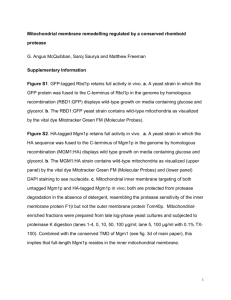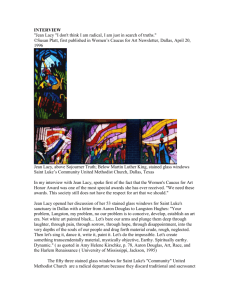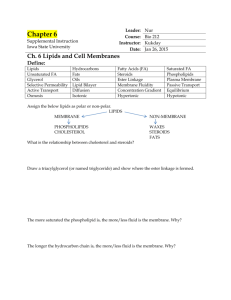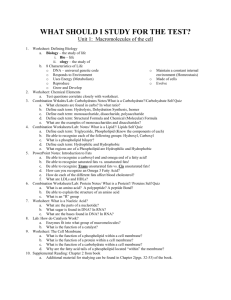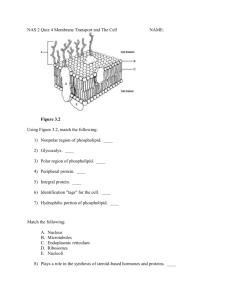Biosketch - University of Texas
advertisement
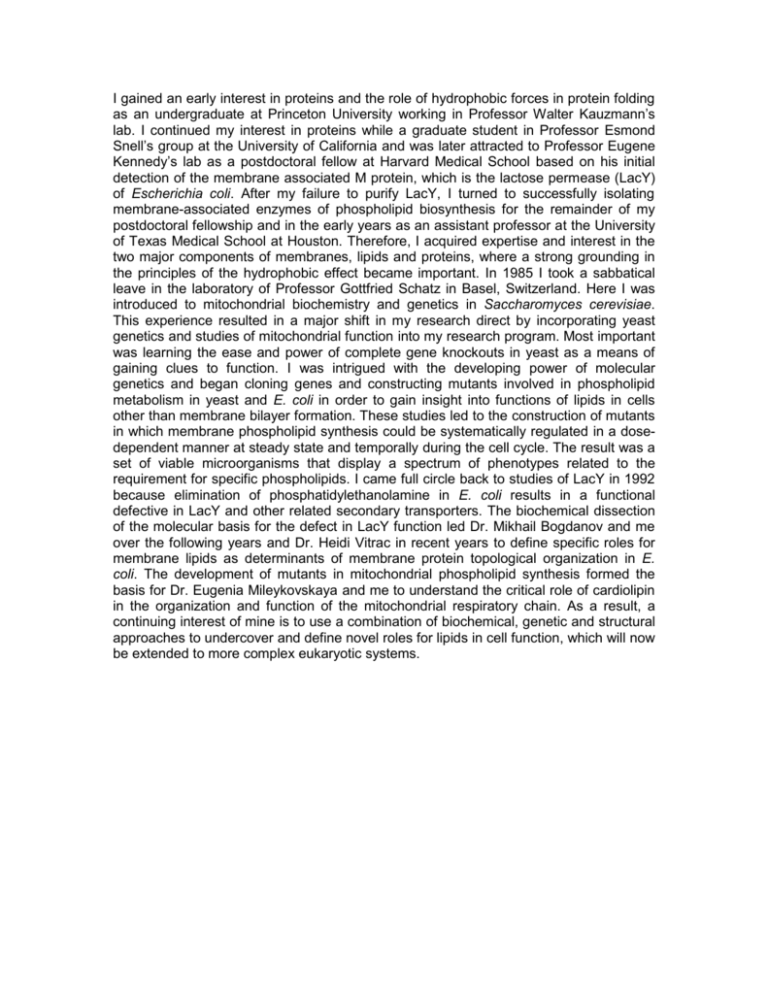
I gained an early interest in proteins and the role of hydrophobic forces in protein folding as an undergraduate at Princeton University working in Professor Walter Kauzmann’s lab. I continued my interest in proteins while a graduate student in Professor Esmond Snell’s group at the University of California and was later attracted to Professor Eugene Kennedy’s lab as a postdoctoral fellow at Harvard Medical School based on his initial detection of the membrane associated M protein, which is the lactose permease (LacY) of Escherichia coli. After my failure to purify LacY, I turned to successfully isolating membrane-associated enzymes of phospholipid biosynthesis for the remainder of my postdoctoral fellowship and in the early years as an assistant professor at the University of Texas Medical School at Houston. Therefore, I acquired expertise and interest in the two major components of membranes, lipids and proteins, where a strong grounding in the principles of the hydrophobic effect became important. In 1985 I took a sabbatical leave in the laboratory of Professor Gottfried Schatz in Basel, Switzerland. Here I was introduced to mitochondrial biochemistry and genetics in Saccharomyces cerevisiae. This experience resulted in a major shift in my research direct by incorporating yeast genetics and studies of mitochondrial function into my research program. Most important was learning the ease and power of complete gene knockouts in yeast as a means of gaining clues to function. I was intrigued with the developing power of molecular genetics and began cloning genes and constructing mutants involved in phospholipid metabolism in yeast and E. coli in order to gain insight into functions of lipids in cells other than membrane bilayer formation. These studies led to the construction of mutants in which membrane phospholipid synthesis could be systematically regulated in a dosedependent manner at steady state and temporally during the cell cycle. The result was a set of viable microorganisms that display a spectrum of phenotypes related to the requirement for specific phospholipids. I came full circle back to studies of LacY in 1992 because elimination of phosphatidylethanolamine in E. coli results in a functional defective in LacY and other related secondary transporters. The biochemical dissection of the molecular basis for the defect in LacY function led Dr. Mikhail Bogdanov and me over the following years and Dr. Heidi Vitrac in recent years to define specific roles for membrane lipids as determinants of membrane protein topological organization in E. coli. The development of mutants in mitochondrial phospholipid synthesis formed the basis for Dr. Eugenia Mileykovskaya and me to understand the critical role of cardiolipin in the organization and function of the mitochondrial respiratory chain. As a result, a continuing interest of mine is to use a combination of biochemical, genetic and structural approaches to undercover and define novel roles for lipids in cell function, which will now be extended to more complex eukaryotic systems.

